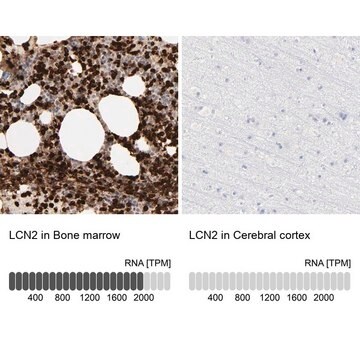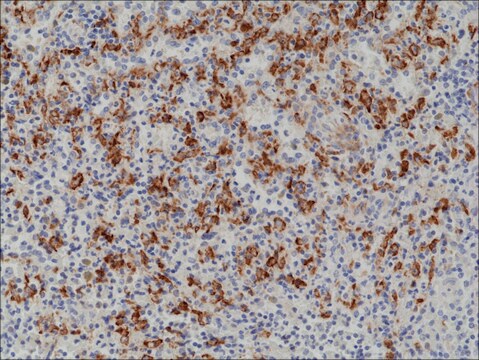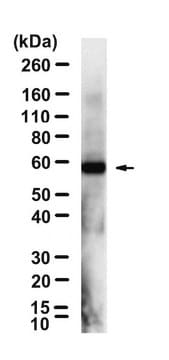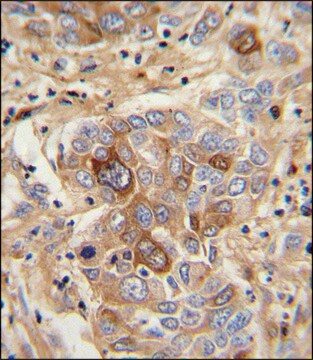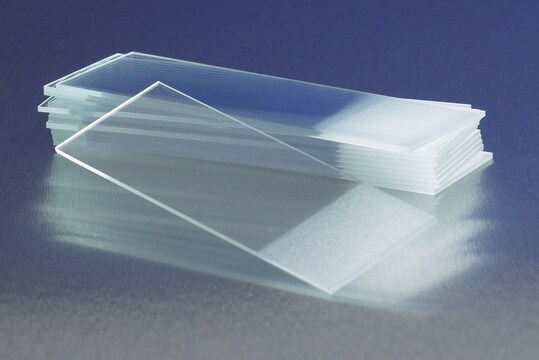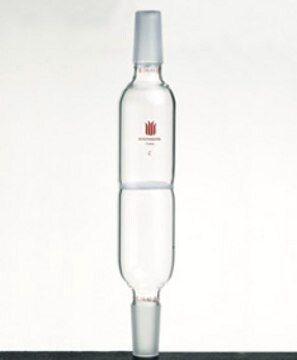General description
We are committed to bringing you greener alternative products, which adhere to one or more of The 12 Principles of Green Chemistry.This antibody is Preservative-free, produced without the harm or sacrifice of animals and exceptionally stable to allow for ambient shipping and storage if needed and thus aligns with "Waste Prevention", "Designing Safer Chemicals" and "Design for Energy Efficiency".
Click here for more information.
ZooMAb® antibodies represent an entirely new generation of recombinant monoclonal antibodies. Each ZooMAb® antibody is manufactured using our proprietary recombinant expression system, purified to homogeneity, and precisely dispensed to produce robust and highly reproducible lot-to-lot consistency. Only top-performing clones are released for use by researchers. Each antibody is validated for high specificity and affinity across multiple applications, including its most commonly used application. ZooMAb® antibodies are reliably available and ready to ship when you need them.
Specificity
Clone 1E3 is a ZooMAb® rabbit recombinant monoclonal antibody that specifically detects Lipocalin-2/NGAL. It targets an epitope within 17 amino acids from the internal region.
Immunogen
KLH-conjugated linear peptide corresponding to 17 amino acids from the internal region of human Lipocalin-2/NGAL.
Application
Quality Control Testing
Evaluated by Western Blotting in HT-29 cell lysate.
Western Blotting Analysis: A 1:1,000 dilution of this antibody detected Lipocalin-2/NGAL in HT-29 cell lysate.
Tested Applications
Western Blotting Analysis: A 1:1,000 dilution from a representative lot detected Lipocalin-2/NGAL in Human kidney tissue lysate.
Immunohistochemistry (Paraffin) Analysis: A 1:1,000 dilution from a representative lot detected Lipocalin-2/NGAL in Human bone marrow tissue sections.
Affinity Binding Assay: A representative lot of this antibody bound Lipocalin-2/NGAL peptide with a KD of 1.2 x 10-6 in an affinity binding assay.
Note: Actual optimal working dilutions must be determined by end user as specimens, and experimental conditions may vary with the end user.
Target description
Neutrophil gelatinase-associated lipocalin (UniProt: P80188; also known NGAL, 25 kDa alpha-2-microglobulin-related subunit of MMP-9, Lipocalin-2, Oncogene 24p3, Siderocalin, p25) is encoded by the LCN2 (also known as HNL, NGAL) gene (Gene ID: 3934) in human. Lipocalin-2 is an iron-trafficking cytoplasmic protein that is synthesized with a signal peptide (aa 1-20) that is subsequently cleaved off to produce the mature form. It releases the bound iron in the acidic lumen of cytoplasmic vesicles. Higher expression of Lipocalin-2 is observed in bone marrow, uterus, prostate, salivary gland, stomach, appendix, colon, trachea, and lung. It is also detected in neutrophils. It is involved in multiple processes, including apoptosis, innate immunity, and renal development. It serves as a marker of inflammation. It is reported to bind iron through association with 2,3-dihydroxybenzoic acid (2,3-DHBA), a siderophore that delivers or removes iron from the cell, depending on the context. The iron-bound form of Lipocalin-2 is internalized following binding to the SLC22A17 (24p3R) receptor that LEADS™ to release of iron and subsequent increase of intracellular iron concentration. However, association of the iron-free form (apo-24p3) with the SLC22A17 (24p3R) receptor is followed by association with an intracellular siderophore, iron chelation and iron transfer to the extracellular medium, which LEADS™ to a reduction in intracellular iron levels. Two isoforms of Lipocalin-2 have been described that are produced by alternative splicing. This ZooMAb® recombinant monoclonal antibody, generated by our propriety technology, offers significantly enhanced specificity, Affinity™, reproducibility, and stability over conventional monoclonals. (Ref.: Bao, G., et al. (2010). Nat. Chem. Biol. 6(8); 602-609; Yang, J., et al. (2003). Mol. Cell Biol. 10(5); 1045-1056).
Physical form
Purified recombinant rabbit monoclonal antibody IgG, lyophilized in PBS with 5% Trehalose, normal appearance a coarse or translucent resin. The PBS/trehalose components in the ZooMAb formulation can have the appearance of a semi-solid (bead like gel) after lyophilization. This is a normal phenomenon. Please follow the recommended reconstitution procedure in the data sheet to dissolve the semi-solid, bead-like, gel-appearing material. The resulting antibody solution is completely stable and functional as proven by full functional testing. Contains no biocide or preservatives, such as azide, or any animal by-products. Larger pack sizes provided as multiples of 25 µL.
Reconstitution
300 µg/mL after reconstitution at 25 µL per vial. Please refer to guidance on suggested starting dilutions and/or titers per application and sample type.
Storage and Stability
Recommend storage of lyophilized product at 2-8°C; Before reconstitution, micro-centrifuge vials briefly to spin down material to bottom of the vial; Reconstitute each vial by adding 25 µL of filtered lab grade water or PBS; Reconstituted antibodies can be stored at 2-8°C, or -20°C for long term storage. Avoid repeated freeze-thaws.
Other Notes
Concentration: Please refer to the Certificate of Analysis for the lot-specific concentration.
Legal Information
Affinity is a trademark of Mine Safety Appliances Co.
LEADS is a trademark of Compugen
ZooMAb is a registered trademark of Merck KGaA, Darmstadt, Germany
Disclaimer
Unless otherwise stated in our catalog or other company documentation accompanying the product(s), our products are intended for research use only and are not to be used for any other purpose, which includes but is not limited to, unauthorized commercial uses, in vitro diagnostic uses, ex vivo or in vivo therapeutic uses or any type of consumption or application to humans or animals.


